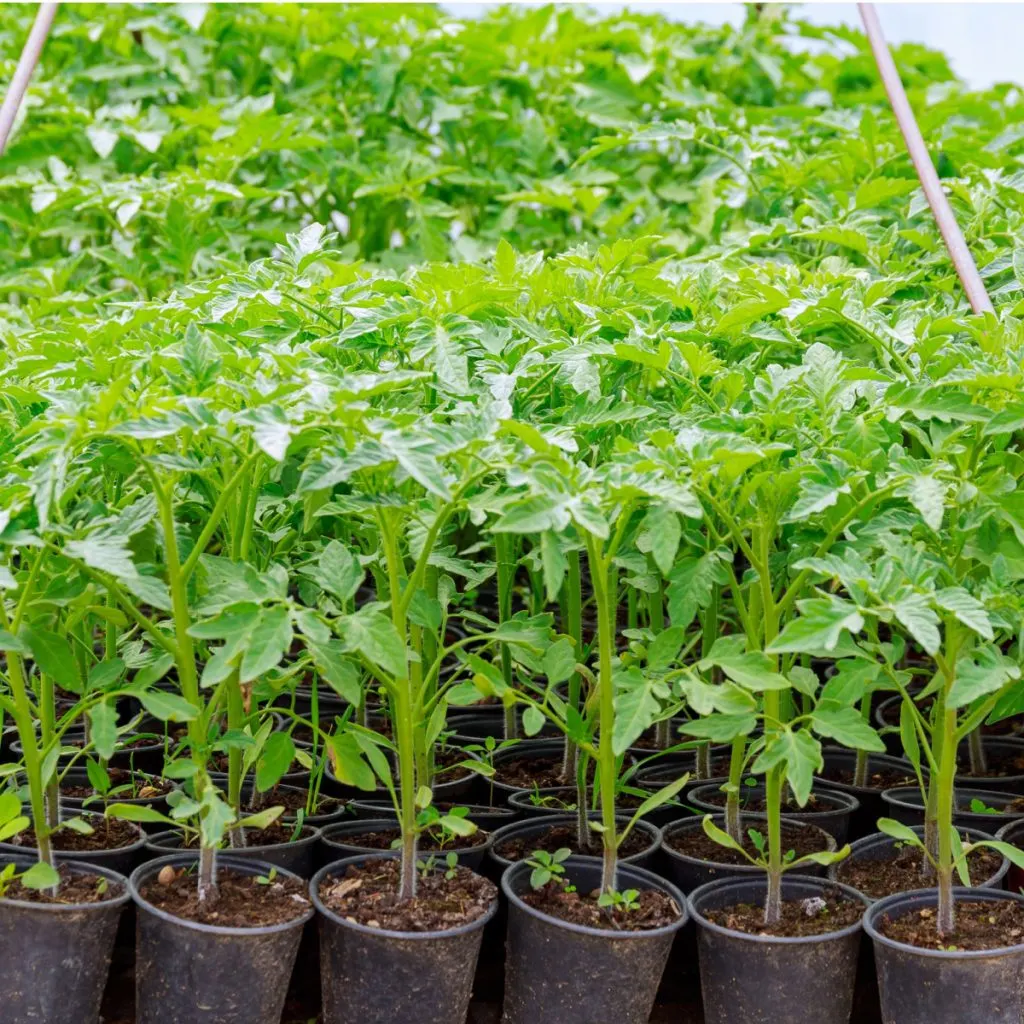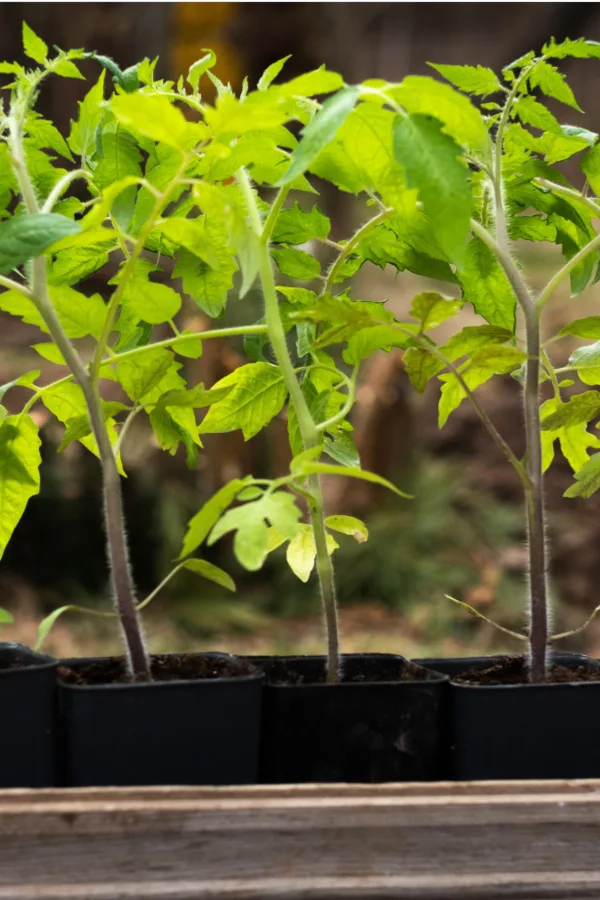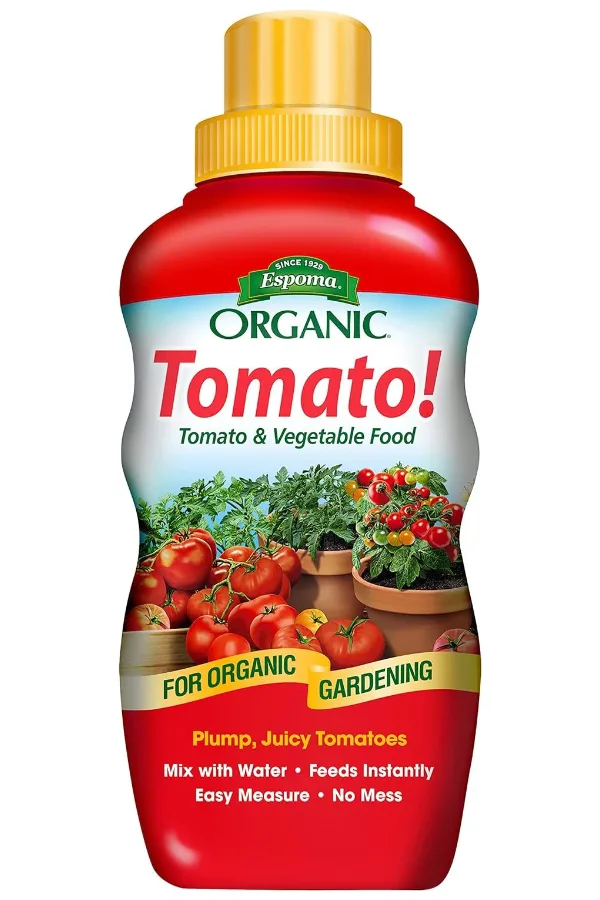One of the best ways to get tomato transplants and seedlings off to a fast start is to fertilize them – but as you’ll find out in today’s article – how, when and what you use to fertilize your young plants can make a huge difference in just how healthy and strong your plant will grow!
One of the biggest mistakes gardeners often make when growing their own tomato plants from seed is to not fertilize them when they are young seedlings and transplants. Many think young plants simply don’t need a boost when first starting out. Others worry they may harm or injure their young plants with too strong of a dose of power.
While it’s true that you can harm seedlings and transplants with an overabundance of fertilizer, one thing is for sure – young tomato plants do need extra power to develop healthy roots, strong stems, branches and foliage.

Giving Young Tomato Plants The Energy They Need – How To Fertilize Tomato Transplants & Seedlings
From the time a tomato seed sprouts into a seedling, it requires nutrients. That is exactly why using a fertile seed starting soil is so important. But even if that soil is loaded with power, young seedlings will begin to use it up quickly.
Let’s face it, seed trays and compartments only have so much room for soil. And once seedlings begin to deplete the soil of nutrients, they can struggle to fill out. Both up top, and more importantly, below the soil with their roots. But that is exactly where fertilizing comes into play!
Powering young plants might seem a bit scary – but it doesn’t have to be. Success really boils down to simply giving your plants a light dose of energy in a consistent manner. And as long as you do that – there is little worry of harming your plants. Not with too much energy – or not enough.
The good news is that there are several easy ways to fertilize young plants with little trouble or expense. In fact, as you will see below, if you happen to have a compost pile, you can easily make your own great seedling fertilizer for free.

Timing Is Everything – How To Fertilize Tomato Transplants & Seedlings
There are three major guidelines to fertilizing young tomato plants. The first is timing – as knowing when you need to start powering up your young plants. The second is selecting the right type of fertilizer to feed to your tomatoes. And the third is all about using just right amount to feed your plants for perfect growth.
With that in mind, here is a look at each step – including some of the best choices to use when powering up your seedlings for a fast start.
How To Fertilize Tomato Transplants & Seedlings
#1 When Should I Fertilize Tomato Seedlings & Transplants?
So how soon should you start to fertilize your seedlings? Once seeds sprout and reach three to four weeks of age, it’s safe to begin to feed them nutrients.
It takes two to three weeks for a seed to start developing extensive roots. Likewise, it takes about that long for the seedling to progress enough to have a strong main stem and several leaves. By giving your seedlings a full three to four weeks before fertilizing, you can be sure they are safe for additional nutrients.

#2 Choosing The Right Type Of Fertilizer – How To Fertilize Tomato Transplants & Seedlings
When it comes to fertilizing young tomato plants, liquid fertilizer is the way to go! Unlike granular fertilizers which can only feed by leaching into the soil, liquid fertilizer absorb through both the roots in the soil and the foliage and stems above. They also happen to energize plants faster as well.
Perhaps best of all, liquid fertilizers can be easily adjusted for strength. When a granular fertilizer is put down, the only way to attempt to adjust the dose is by putting more or fewer granules down. But with a liquid, you can simply use water to dilute the mix to whatever strength desired. And for young tomato plants, that is crucial advantage!
If you were to give a full dose of a strong fertilizer to young seedlings, it would most likely burn their foliage. If strong enough, it might even spell the end for the entire plant. But a weaker liquid fertilizer is ideal for young plants, allowing for consistent and steady fertilizing.
#3 The Best Fertilizers For Tomato Seedlings And Transplants
There are many choices to use for powering young plants. If you are looking for something ready-to-go, there are quite a few liquid organic fertilizers on the market that work wonders for young tomato plants.
The key is to select one that is not too overpowering and that you can dilute easily. Look for lower ratios of nitrogen, phosphorous and potassium (N-P-K). Fertilizers such as Espoma’s Tomato Food have a 1-3-1 NPK ratio that is ideal to give seedlings what they need. Affiliate Product Link: Espoma Organic 8 Ounce Concentrated Tomato Liquid Fertilizer

When fertilizing transplants with any commercial liquid fertilizers, always dilute by at least one-half of the recommended dose. If it is a particularly strong fertilizer, dilute using one part fertilizer with two parts water. Again, this will keep doses lower and safer for young seedlings.
Using Compost Tea or Worm Casting Tea – How To Fertilize Tomato Transplants & Seedlings
Another great way to power up young seedlings and transplants is with compost or worm casting tea. Both are 100% organic – and both can be made inexpensively and easily right at home.
You can make compost tea by soaking fresh compost in water for a few days. Once the liquid is strained off, from the compost, it can then be used to fertilize your plants. The great thing about compost tea is that the nutrients are so pure and gentle you don’t need to dilute it before using.
The same goes for worm casting tea as well. It is gentle but powerful for seedlings, and you can use it at full strength as well. To make worm casting tea, the process is much the same as compost tea. Simply mix 1 cup of casting with a gallon of water and let it steep for a few days.
Worm castings are actually excellent to use when planting your tomatoes too! See: How To Use Worm Castings To Fertilize Tomato Plants – Grow Your Best Tomatoes Ever!
Here is to powering your tomato seedlings and transplants this year – and to having your best crop of tomatoes ever! When it gets close to time to plant your transplants outdoors, be sure to see: How To Get Store Bought Tomato Plants Ready For Planting In Your Garden.
I Grow Tomatoes
Follow Our Facebook Page For Even More Great Tomato Growing Tips! I Grow Tomatoes Facebook Page
I Grow Tomatoes is a website created for those who love all things about tomatoes – from planting and growing – to cooking and canning! We publish two articles every week, 52 weeks a year. Sign up today to follow via email! This article may contain affiliate links.
